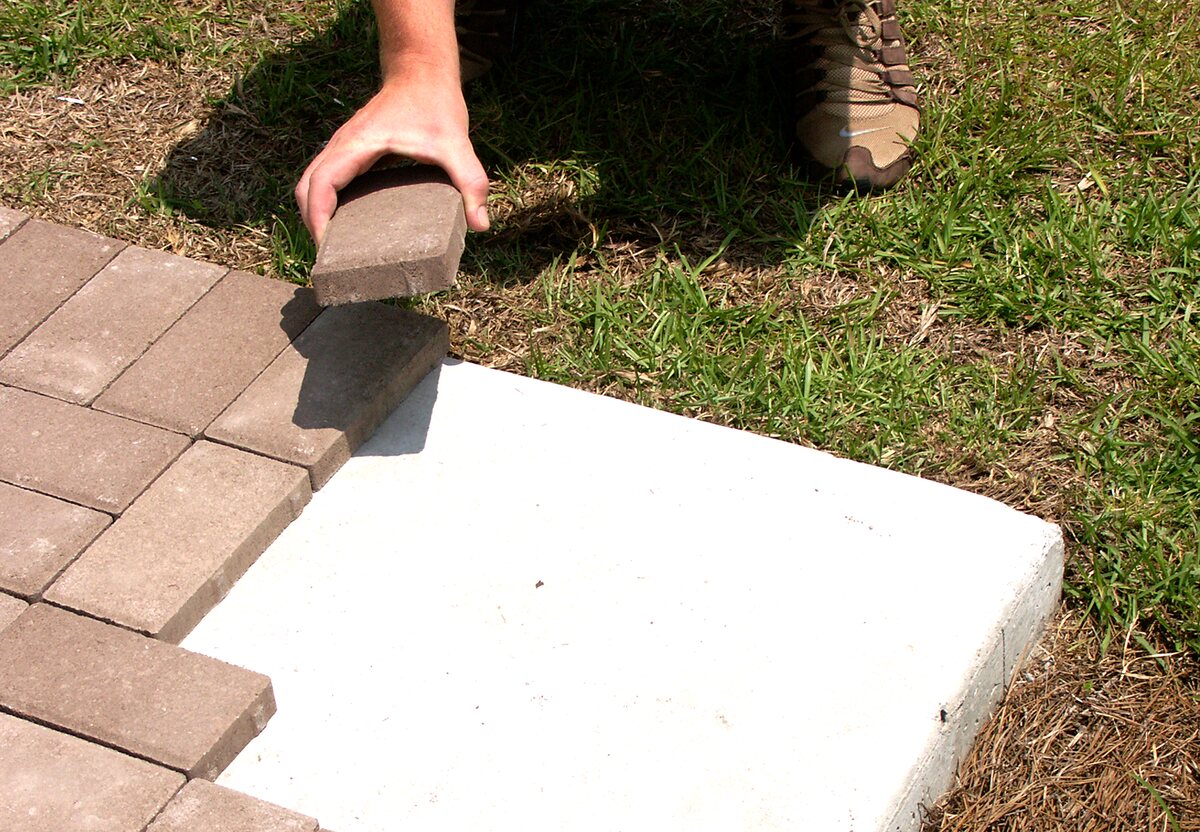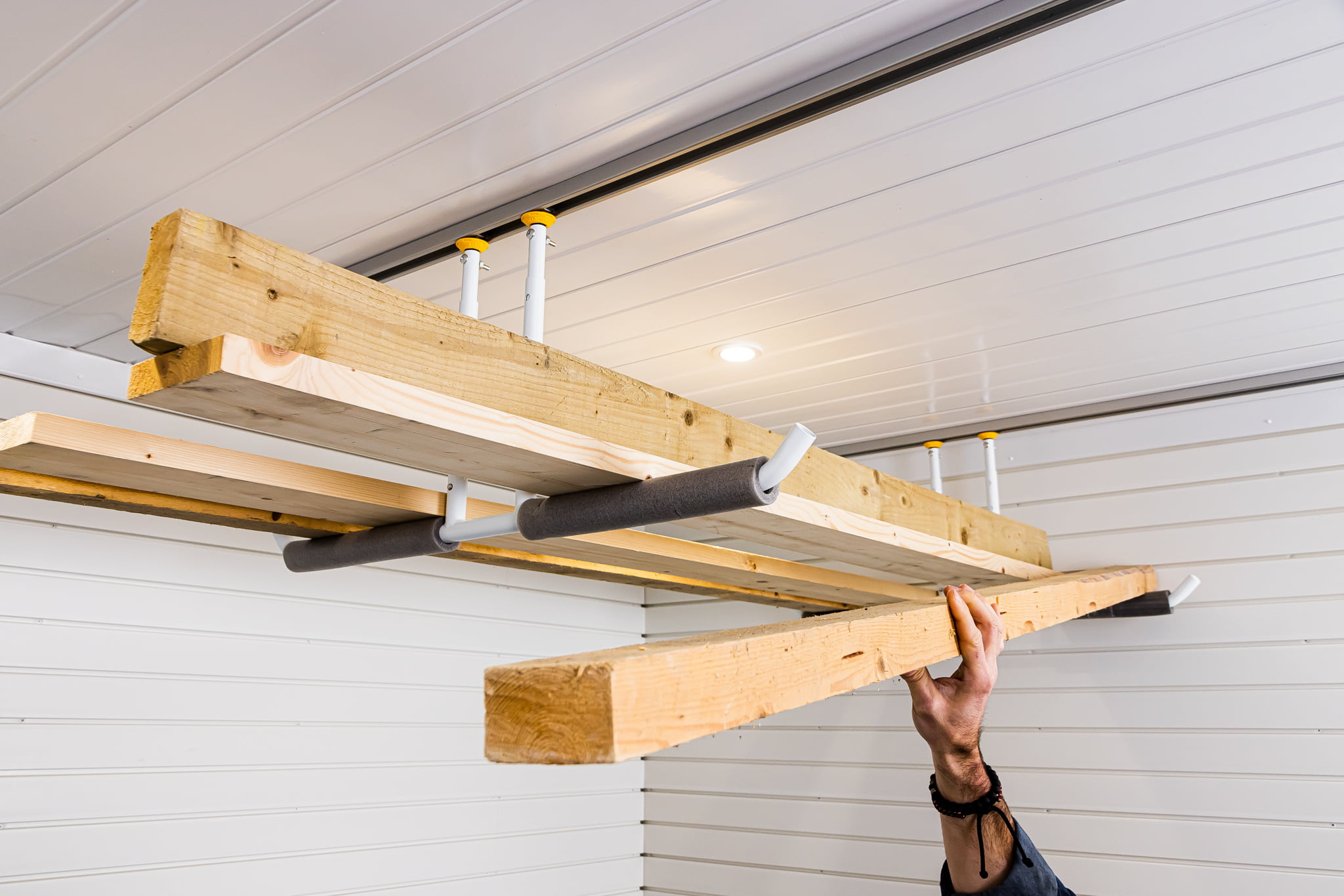

Articles
How Much Weight Can Attic Hold
Modified: October 28, 2024
Discover how much weight an attic can hold in this informative article. Learn about the factors that determine weight limits and ensure the safety of your storage.
(Many of the links in this article redirect to a specific reviewed product. Your purchase of these products through affiliate links helps to generate commission for Storables.com, at no extra cost. Learn more)
Introduction
When it comes to utilizing your attic space for storage, it’s important to understand its load capacity. Attics are not designed to hold heavy weights, and exceeding their weight limits can lead to structural damage or even a collapse. That’s why it’s crucial to have a clear understanding of how much weight your attic can safely hold.
In this article, we will explore the factors that affect attic load capacity, how to determine the weight limit for your attic, common items stored in attics and their weights, potential risks of overloading an attic, and some helpful tips for safely storing items in your attic.
By the end of this article, you’ll have the knowledge needed to make informed decisions about utilizing your attic space while ensuring the safety and integrity of your home.
Key Takeaways:
- Understanding the weight capacity of your attic is crucial to prevent structural damage, compromised insulation, and safety hazards. Distribute weight evenly, avoid overloading, and prioritize safety when utilizing attic space for storage.
- Safely storing items in your attic requires proper organization, even weight distribution, and regular inspection for signs of damage. Consider alternative storage options if the attic’s weight limit is too restrictive or for delicate items.
Read more: How Much Weight Can A Ladder Hold
Understanding Attic Load Capacity
Attic load capacity refers to the maximum weight that an attic floor can safely support without causing structural damage. The load capacity is determined by various factors such as the construction of your home, the type of framing used in the attic floor, and the materials used in the construction.
Typically, attics are designed to mainly support the weight of the roof and ceiling below. The floor of the attic is often constructed with ceiling joists, which are generally not as robust as the floor joists in other areas of the house. This means that the load capacity of the attic floor is lower than that of other living spaces.
The load capacity of an attic can vary depending on the age and condition of the house. Older homes may have lower load capacities due to outdated construction methods and materials. It’s important to consult the original building plans or consult with a structural engineer to determine the specific load capacity of your attic.
In addition to the load capacity of the attic floor, it’s also essential to consider the vertical and horizontal forces that can be exerted on the attic. Vertical forces include the weight of people, furniture, and stored items, while horizontal forces can be caused by strong winds or seismic activity.
Understanding the attic load capacity is crucial because exceeding this limit can put significant stress on the structure of your home. It can lead to sagging ceilings, cracking walls, and even a complete collapse of the attic floor. That’s why it’s essential to be mindful of the weight you place in the attic and take necessary precautions to ensure you stay within the safe load capacity.
Factors Affecting Attic Load Capacity
Several factors contribute to the load capacity of an attic. Understanding these factors is essential for determining the weight limit and ensuring the safe use of your attic space.
1. Structural Design: The design and construction of your home play a significant role in determining attic load capacity. The type of framing used, such as trusses or joists, can affect how much weight the attic can support. Additionally, the spacing and size of the framing members impact the load capacity.
2. Material Strength: The strength and quality of the materials used in the construction of the attic floor are crucial. Different types of lumber or engineered wood products have different load-bearing capacities. The condition of these materials, including signs of rot or damage, can also affect load capacity.
3. Support Beams: The presence of support beams or load-bearing walls beneath the attic floor helps distribute weight to the underlying structure. The spacing and size of these beams play a significant role in determining the load capacity. If you’re unsure about the location of support beams in your attic, it’s advisable to consult a professional.
4. Live Load vs. Dead Load: Attic load capacity is typically categorized into two types of loads: live load and dead load. Live load refers to the weight of people, furniture, and items being temporarily stored in the attic. Dead load, on the other hand, refers to the weight of the permanent elements of the attic, such as the structure itself and insulation. Both live load and dead load should be considered when determining the safe load capacity.
5. Climate and Environmental Conditions: Extreme weather conditions, such as heavy snowfalls or high winds, can increase the load on the attic. It’s important to factor in these environmental conditions when determining the attic’s load capacity to ensure it can withstand such external forces.
Remember, each home and attic is unique, so it’s important to assess these factors specific to your situation. Consulting a professional, such as a structural engineer or contractor, can provide valuable guidance in determining the load capacity of your attic and ensuring its safe use.
Determining the Weight Limit for Your Attic
Determining the weight limit for your attic is a crucial step in safely utilizing the space. While it’s recommended to consult with a professional, such as a structural engineer, to accurately assess the load capacity, there are some general guidelines you can follow.
1. Consult Building Plans and Codes: If you have access to the original building plans or blueprints of your home, they may provide information on the attic’s load capacity. These plans often indicate the design specifications and materials used in the construction, which can give you an idea of the weight limit. Additionally, local building codes may stipulate minimum load requirements for attics. Checking these codes can offer valuable insight into the weight capacity of your attic.
2. Assess Existing Supports: Assessing the existing supports in your attic, such as load-bearing walls or beams, can provide an indication of the weight capacity. If you’re unsure about the presence or location of these supports, it’s best to consult with a professional. They can help identify the load-bearing elements and provide guidance on the weight limit.
3. Consider the Age and Condition of Your Home: The age and condition of your home can impact the weight limit of the attic. Older homes may have lower load capacities due to outdated construction methods, materials, or wear and tear over time. Inspecting the attic for any signs of damage, such as sagging or cracked joists, is crucial in assessing the weight limit safely.
4. Calculate Load Distribution: When determining the weight limit, it’s essential to consider the distribution of weight across the attic floor. Avoid placing heavy items in concentrated areas or near weak spots, as this can adversely affect the load capacity. Distributing the weight evenly across the attic floor helps maintain its structural integrity.
5. Seek Professional Assistance: While these guidelines can provide a general understanding, it’s strongly advised to consult with a professional, such as a structural engineer or contractor, to accurately determine the weight limit for your attic. They can assess the specific factors of your home, provide expertise, and ensure your attic is utilized safely.
Remember, exceeding the weight limit of your attic can lead to serious structural damage. It’s crucial to err on the side of caution and always prioritize safety when utilizing the attic space for storage.
Ensure to check the attic’s load capacity before storing heavy items. Consult a structural engineer if unsure about the weight limit.
Common Items Stored in Attics and Their Weights
Attics are often used as storage spaces for various items. However, it’s important to be aware of the weight of these items to ensure you stay within the safe load capacity of your attic. Here are some common items stored in attics and their approximate weights:
- Boxes of Clothing: A typical cardboard box filled with clothing can weigh between 20 to 40 pounds, depending on the size and amount of clothing inside.
- Books: Books can range in weight, but on average, a small box of books can weigh around 40 to 50 pounds.
- Holiday Decorations: Decorations such as artificial Christmas trees, ornaments, and lights can be quite lightweight, with a tree weighing around 10 to 20 pounds.
- Small Furniture: Items like chairs, small tables, or nightstands usually weigh between 20 to 50 pounds.
- Storage Bins: Plastic storage bins filled with various items can range in weight depending on their size and contents. Generally, a bin can weigh between 20 to 50 pounds.
- Suitcases: Packed suitcases can weigh anywhere from 20 to 50 pounds, depending on their size and the items packed inside.
- Sports Equipment: Sporting equipment such as golf clubs, tennis rackets, and baseball bats can vary in weight. On average, a set of golf clubs can weigh around 25 pounds.
- Exercise Equipment: Treadmills, stationary bikes, or weightlifting equipment can be quite heavy, ranging from 100 to 300 pounds or more.
Remember, these weights are approximate and can vary based on the specific items and materials used. It’s important to consider the cumulative weight of all items stored in the attic to ensure you do not exceed the safe load capacity.
If you’re uncertain about the weight of a particular item or if you have any doubts about the load capacity of your attic, it’s recommended to consult with a professional or structural engineer who can provide specific guidance based on your unique situation.
Read more: How Much Weight Can An Asphalt Driveway Hold
Potential Risks of Overloading an Attic
Overloading an attic by exceeding its weight limit can lead to various risks and consequences. It’s essential to understand these potential risks to ensure the safety of your home and its occupants. Here are some of the risks associated with overloading an attic:
1. Structural Damage: Attics are not designed to handle heavy loads. Exceeding the weight limit can put excessive strain on the attic floor, joists, and supports, leading to structural damage. This can result in sagging ceilings, cracks in walls and ceilings, or even a complete collapse of the attic floor.
2. Compromised Insulation: Overloading an attic can compress or damage insulation, reducing its effectiveness. Compressed insulation loses its ability to trap air and regulate temperature, leading to increased energy consumption and reduced comfort in your home.
3. Increased Fire Hazard: An overloaded attic can increase the risk of a fire. Piled-up items, especially those that are flammable or can conduct heat, may inadvertently come into contact with electrical wiring or fixtures, creating a potential fire hazard.
4. Poor Air Circulation and Ventilation: Storing items in an attic can impede air circulation and ventilation, especially if they block vents or cover air ducts. This lack of proper airflow can lead to moisture buildup, mold growth, and potential damage to the structure and belongings.
5. Safety Hazards: An overloaded attic can pose safety hazards for anyone accessing the space. Walking on a weakened attic floor can increase the likelihood of falls or injuries. Additionally, if items are stored haphazardly, they may fall or shift unexpectedly, causing injuries when retrieving or moving objects.
6. Insurance and Liability Issues: Overloading an attic and causing damage to your home can potentially void your homeowner’s insurance policy. In addition, if someone is injured due to the collapse or falling objects caused by an overloaded attic, you may be held liable for their injuries.
It’s important to remember that the weight limit of an attic is there for a reason – to ensure the safety and integrity of your home. Avoiding overloading your attic and staying within the recommended weight limit is crucial in preventing these risks and maintaining a secure living environment.
Tips for Safely Storing Items in Your Attic
Utilizing your attic for storage can be a practical solution to free up space in your home. However, it’s essential to follow some guidelines to ensure the safe storage of items in your attic. Here are some tips to help you store items in your attic safely:
1. Know the Weight Limit: Familiarize yourself with the weight limit of your attic and ensure that you do not exceed it. Refer to building plans, consult professionals, or consult a structural engineer to determine the safe load capacity of your attic.
2. Organize and Label Items: Proper organization is key to maintaining a safe and accessible attic space. Use storage bins, boxes, and labels to categorize and identify your stored items. This will help prevent overcrowding and make it easier to locate items without causing damage to the attic floor.
3. Distribute Weight Evenly: Avoid placing all the weight in one area of the attic. Distribute the weight evenly across the attic floor to prevent excessive strain on specific joists or supports. This will help maintain the structural integrity of the attic.
4. Avoid Storing Heavy or Bulky Items: While attics can be useful for storage, it’s best to avoid storing heavy or bulky items that exceed the weight limit or take up too much space. Bulky items may also obstruct airflow and ventilation in the attic, leading to potential issues such as poor insulation or mold growth.
5. Protect Items from Moisture: Attics can be prone to temperature fluctuations and moisture buildup. To protect your stored items, consider using plastic bins with lids to prevent moisture damage and keep items dry. You can also place a moisture barrier or insulation between the attic floor and your stored items.
6. Secure Items Properly: Ensure that items are securely stored and won’t shift or fall when accessing or moving other items in the attic. Use straps, bungee cords, or brackets to secure boxes or furniture to prevent accidents or injuries.
7. Inspect Regularly: Regularly inspect your attic for any signs of damage, sagging, or cracks in the joists or supports. If you notice any issues, it’s crucial to address them promptly to prevent further damage or potential hazards.
8. Consider Alternative Storage Options: If you find that your attic’s weight limit is too restrictive or you have valuable or delicate items to store, consider alternative storage options such as a garage, basement, or renting a storage unit. These options may provide better climate control and security for your belongings.
Remember, while utilizing your attic for storage can be convenient, safety should always be a priority. By following these tips, you can ensure the safe storage of items in your attic and maintain the structural integrity of your home.
Conclusion
Understanding the weight capacity of your attic and safely storing items in this space is crucial for the integrity and safety of your home. Overloading an attic can lead to structural damage, compromised insulation, increased fire hazards, and other potential risks. By following the guidelines outlined in this article, you can make informed decisions about utilizing your attic space while maintaining a safe and secure environment.
Take the time to determine the weight limit of your attic by consulting building plans, understanding the structural design, and considering the age and condition of your home. Distribute weight evenly across the attic floor and avoid storing heavy or bulky items to prevent excessive strain on the structure. Use proper organization and labeling techniques to keep your attic well-organized and easily accessible.
Protect your stored items from moisture by using sealed plastic bins and ensure that items are securely stored to prevent shifting or falling. Regularly inspect your attic for signs of damage and address any issues promptly. If in doubt, consult with a professional, such as a structural engineer or contractor, who can provide specific guidance based on your attic’s unique characteristics.
Lastly, consider alternative storage options if your attic’s weight limit is too restrictive or if you have valuable or delicate items that require a more controlled environment. Renting a storage unit or utilizing other areas of your home, such as the basement or garage, may be a better option to ensure the safety and preservation of your belongings.
By following these tips and being mindful of the weight capacity, you can utilize your attic for storage while maintaining the integrity of your home. Prioritizing safety and practicing responsible storage habits will help you make the most of this valuable space without compromising the structure and wellbeing of your home.
Curious about optimizing space in your home? Our latest piece on attic storage solutions for 2024 offers a plethora of ingenious ideas to transform your attic into a neatly organized area. Whether you're looking to declutter or find innovative ways to arrange seasonal gear, this article provides practical advice tailored for maximizing attic potential. Don't miss out on turning underused spaces into valuable assets!
Frequently Asked Questions about How Much Weight Can Attic Hold
Was this page helpful?
At Storables.com, we guarantee accurate and reliable information. Our content, validated by Expert Board Contributors, is crafted following stringent Editorial Policies. We're committed to providing you with well-researched, expert-backed insights for all your informational needs.















0 thoughts on “How Much Weight Can Attic Hold”